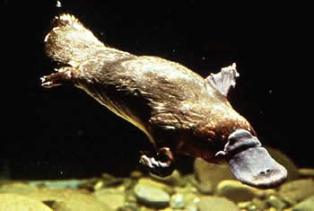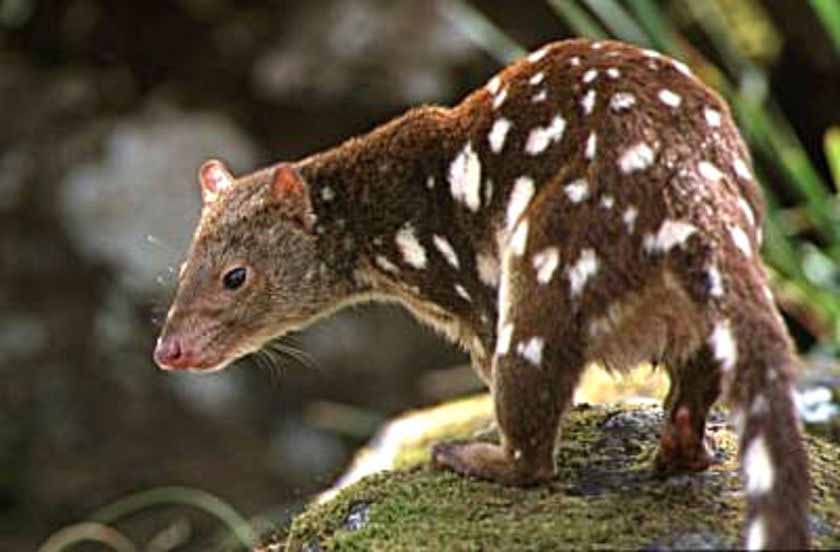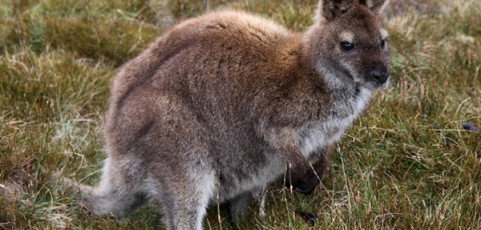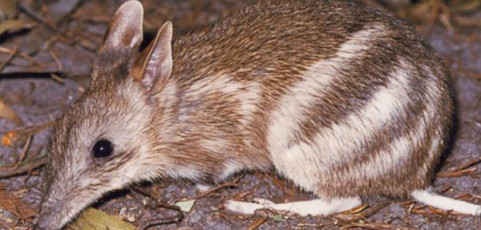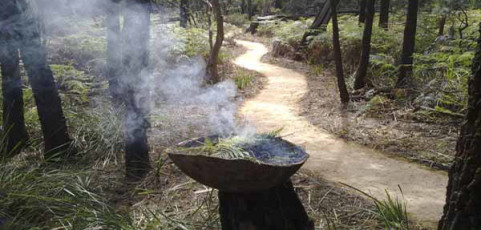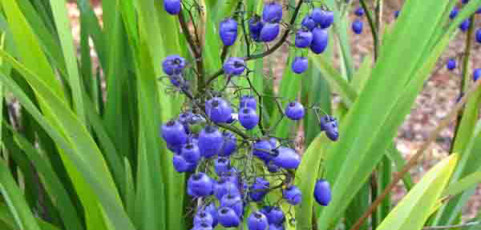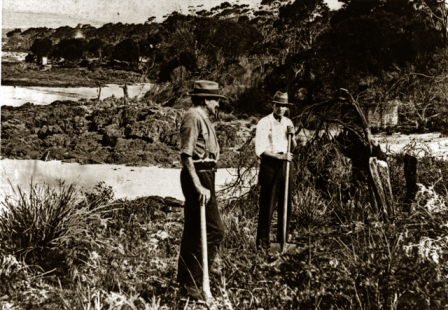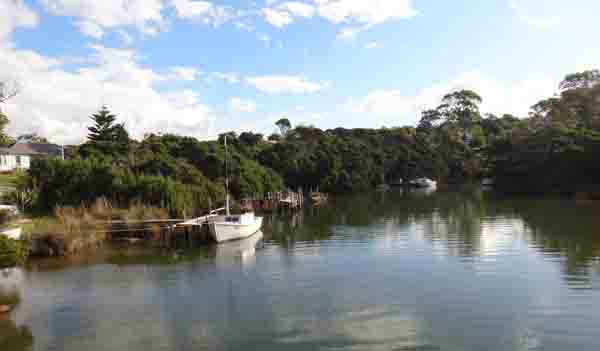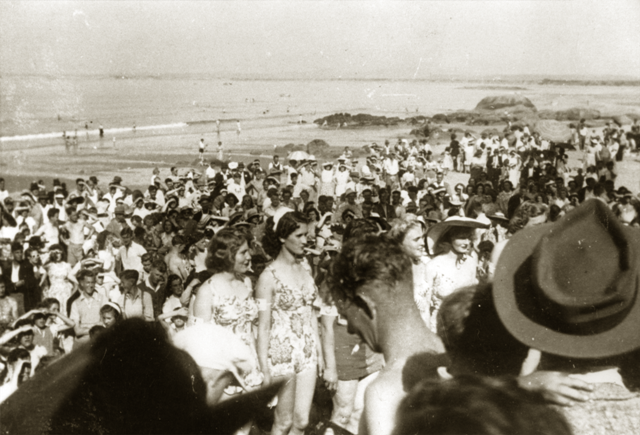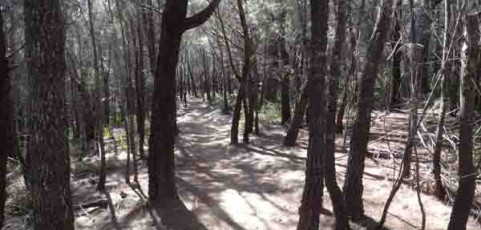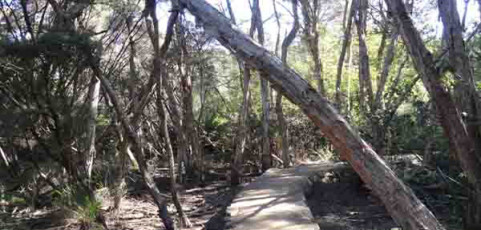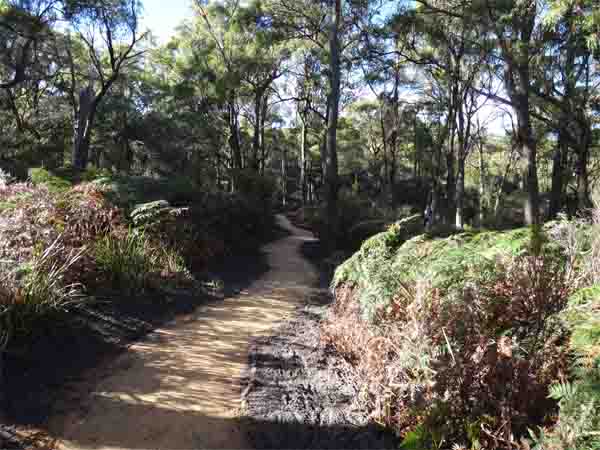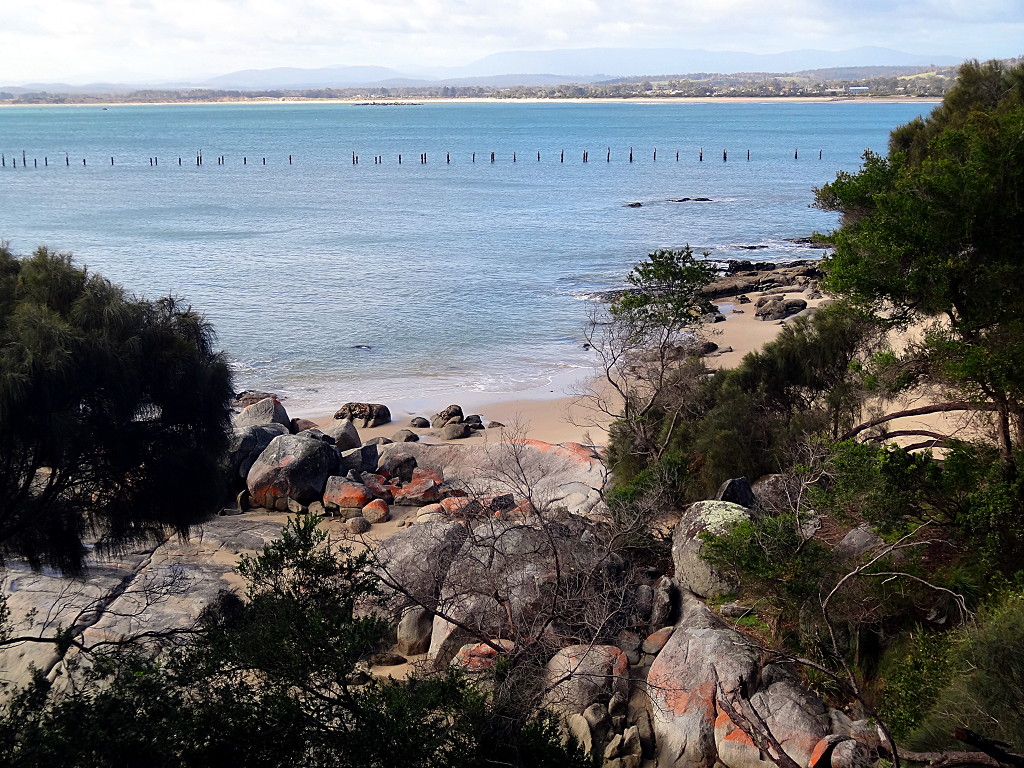Platypus are resident in the freshwater habitat of the Brid River. They dig burrows in the earth banks and forage mainly at night on small invertebrate animals on the bottom, including crustaceans, worms, molluscs, as well as the larvae of many freshwater insects. They can easily detect movement on the river bank, and they have acute hearing.
Spotted-tailed-Quoll
The Spotted-tailed Quoll (Dasyurus maculatus) is the second largest carnivorous marsupial in the world. They kill their prey such as rats, gliding possums, small or injured wallabies, and reptiles by biting on or behind the head. They vary from reddish brown to dark chocolate brown with white spots on the body and tail.
Bennett’s-Wallaby
The Bennetts or Red-necked Wallaby (Macro Rufogriscus) is Tasmania’s largest marsupial and the Rufous or Tasmanian Pademelon ( Thylogale billardierii) is the second largest. The Bennetts Wallaby is easily distinguished by its black nose and paws, and white stripe on the upper lip. Both are mostly nocturnal and solitary, but may be seen grazing at dusk while they feed on grasses and herbs, and the leaves of trees and...
Eastern-Barred-Bandicoot
The Eastern Barred Bandicoot, Southern-brown Bandicoot and Spotted-tailed Quoll are endangered and fully protected by law. Bandicoots are small, nocturnal, solitary marsupials, with large ears and pointed snouts. The Eastern Barred Bandicoot ( Perameles Gunnii ) has a white tail and stripes across its hindquarters. The Southern- brown Bandicoot ( Isoodon Obesulus) is dark brown in colour and its nose, ears and hind feet are...
Welcome to Country
“Yah Pulingina” -Welcome to Country. In respect and recognition of the leenerrerter the traditional owners of the coast and hinterlands around Bridport.
Ceremonial Ochre
Ochre was an important cultural resource for the leenerrerter . Aboriginal women obtained and prepared ochre. It was ground into a sacred powder and used for ceremonial body and tree marking. It was also mixed with grease to waterproof the body, hair and beards of the men. Present day Tasmanian Aborigines still consider ochre to be a special cultural resource. Polelerwine (red ochre) is highly prized. ...
Blue Berry Dianella Tasmanica
Read MoreWorking Bees
In 1926 the North East Advertiser describes a working bee of over 40 cars and 180 men and boys converged on Bridport to clear a mile of foreshore, construct a promenade, and erect picnic tables and seats and repair bathing sheds. The working bee was a great success and an illustration of what can be achieved by cooperation and organisations.
High tide Brid River
In 1869 the government let tenders for the construction of a jetty over the Bid River, near the bridge. Up until that time the description of the river and operations were; the jetty is a heap of stones and few planks, and the entrance to the river is crooked and awkward and does not admit vessels of large tonnage. A new structure is required while tin continues to be shipped out. If that fails, Bridport will go in to consumption. In 1855 a...
Bridport Splash Then
Above photo of Beach Girl Competition Eastmans Beach, Regatta Day 1947 An excerpt from The Eastern Advertiser on March 19th, 1915 describes: an idyllic Bridport scene that carries through to the present day in events like the Bridport Splash: An enjoyable day at the seaside. Ideal weather conditions meant the sports meeting was largely attended and eminently successful. There was a happy and boisterous crowd. The port presented an unusually...
She-oak Forest
The She-oak ( Allocasuarina littoralis ) ‘closed’ forests are remarkably quiet. It is the most drought resistant tree in Tasmania. The needle like foliage is a dull dark grey. The fallen needles create a soft cushioning mat. The nut of the she-oak is also an important cultural resource for the Aboriginal people.
Swamp Paperbark
Starting at Main Street the first part of the walk is along an elevated rock path on tidal flat through a Swamp Paperbark,(Melaleucaericifolia) community.
Platypus
While walking in this area you may see one of the resident platypuses that call this tract of river home.
River-Forest Track
The River-Forest Track can begin either at the road bridge on Main Street near the entrance to the town or at the corner of Maxwell Street and Sandy Point Road. A third shorter segment can be taken in either direction at the Elizabeth Street entry point. This area is now a river or riparian reserve. In Tasmania, these reserves were created to provide public access to water courses and protect native flora. The River-Forest Track was...

